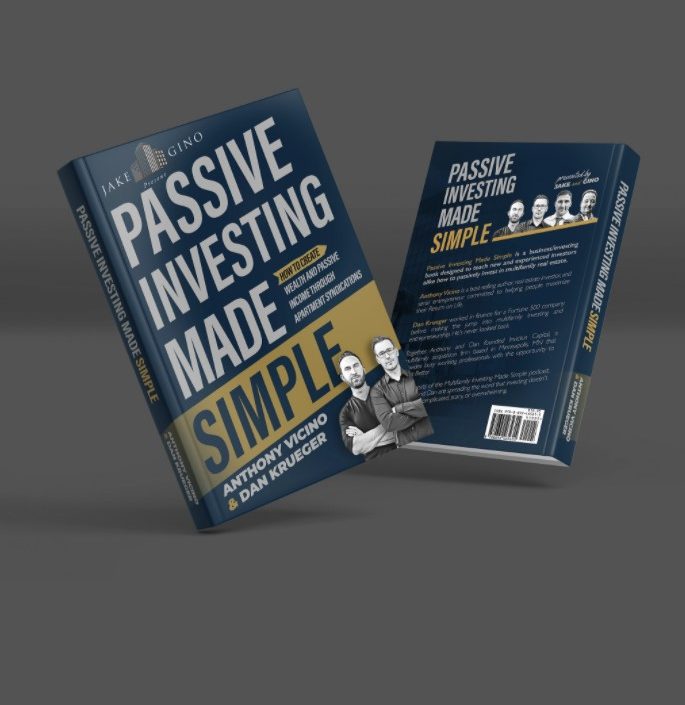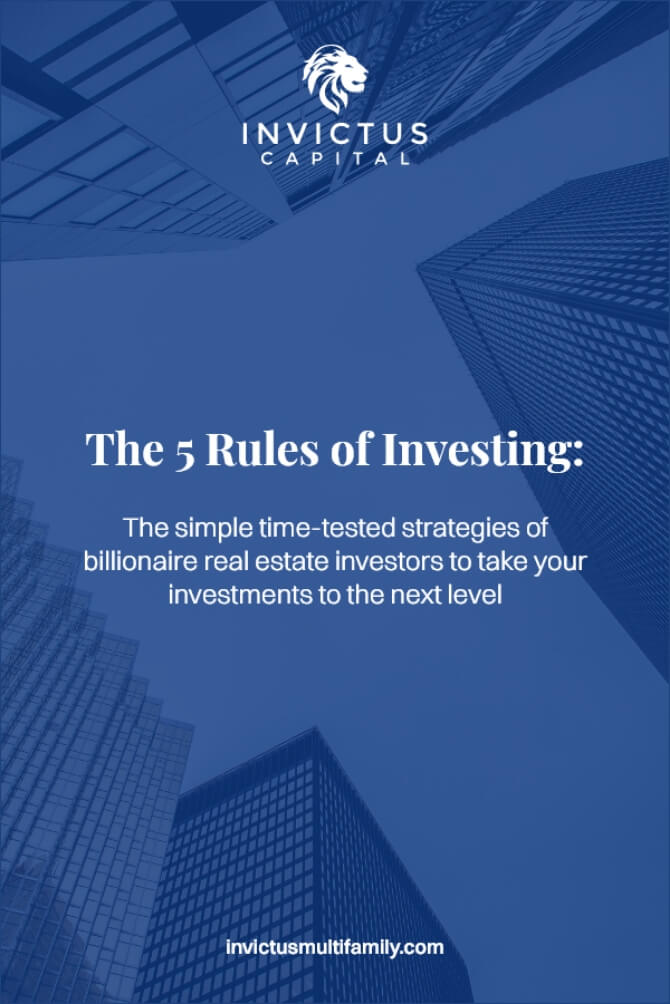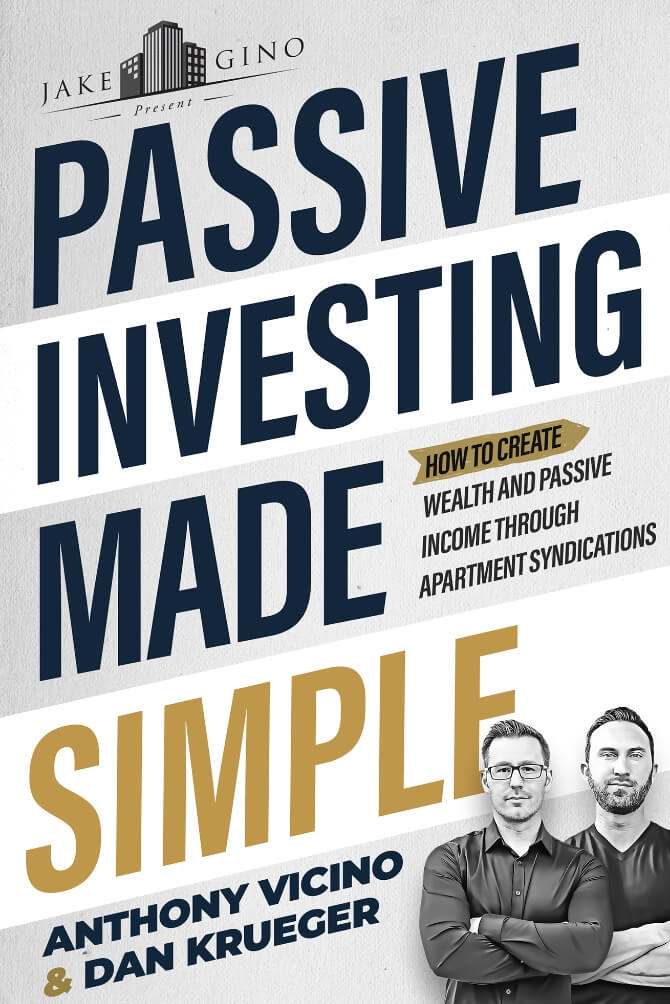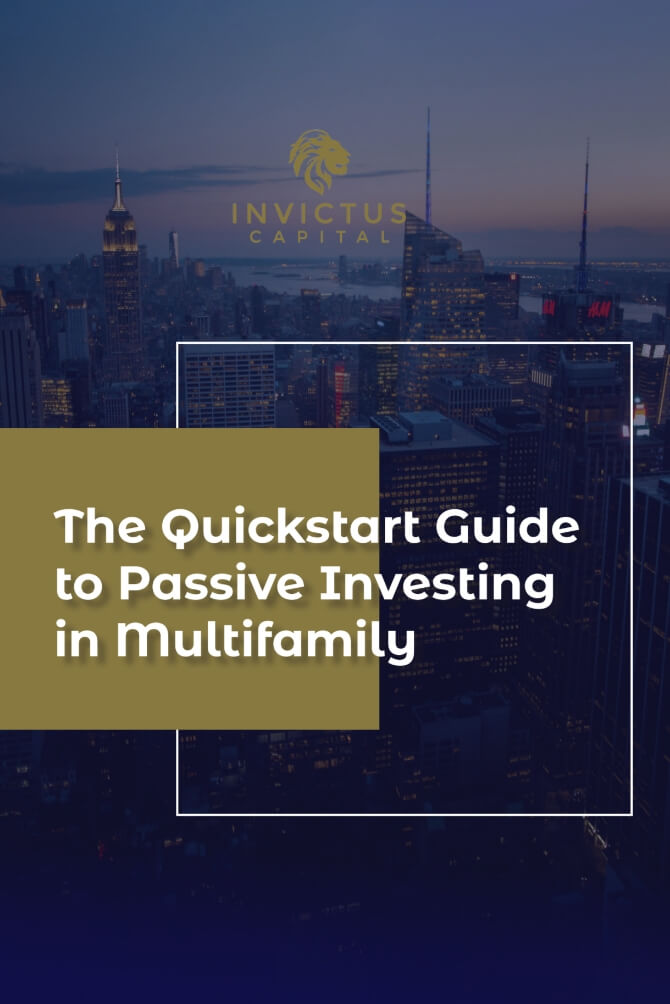For today’s episode, we will be discussing the last part of the capital stack, common debt.
This week we’re covering the common debt, the debt on the top of the stack.
We will talk about these things…and more in another episode of Multifamily Investing Made Simple in under 10 minutes.
Tweetable Quotes:
“most people are fairly familiar with common equity. This is what you’re investing in if you buy a share of Apple” – Dan Kreuger
“there is the chance that the investment goes completely to zero, that you have no legs to stand on and you get nothing out of it” – Anthony Vicino
“preferred equity position, and it’s an institutional investor like a private equity group or a family office that might come with a little bit more pull a little bit more say” – Dan Kreuger
“elevating and putting the common equity holder above even the slum, the slummy GP’s. Those guys should always be the very last to get paid” – Anthony Vicino
LEAVE A REVIEW if you liked this episode!!
Keep up with the podcast! Follow us on Apple, Stitcher, Google, and other podcast streaming platforms.
To learn more, visit us at https://invictusmultifamily.com/
**Want to learn more about investing with us?**
We’d love to learn more about you and your investment goals. Please fill out this form and let’s schedule a call: https://invictusmultifamily.com/contact/
**Let’s Connect On Social Media!**
LinkedIn: https://www.linkedin.com/company/11681388/admin/
Facebook: https://www.facebook.com/invictuscapitalventures/
YouTube: https://bit.ly/2Lc0ctX

The Capital Stack Part Five (Common Equity)
Anthony Vicino: [00:00:14] Hello and welcome to Multifamily Investing Made Simple, the podcast, it’s all about taking the complexity out of real estate investing so that you can take action. Today, I am your host. Anthony Ticino of Invictus Capital joined, as always, the one the only not ever to be duplicated or replicated. Dan one-of-a-kind Kreuger.
Dan Krueger: [00:00:37] Wow, that was a lot of middle names.
Anthony Vicino: [00:00:39] No, it’s just one of a kind, I guess everything else is like a surname. It was like you don’t go by Mr. Dan, you go by the one, the only the replaceable. Usually just Dan.
Dan Krueger: [00:00:50] But this is Dan. If you sit down on the street, then, yes, it would be much less awkward if we just leave it at Dan, not Danny. All right.
Anthony Vicino: [00:01:00] All right. Dan, if that’s really your name, then let’s talk about something that you might know a thing or two about. Let’s get down into the weeds for the final installment of the Capital Stacked Series, where we’re going to talk about the common equity. So let’s get in the mud with the common folk, with the peasants, those poor, poor people who can’t afford anything but the common equity. We see that common equity is the best, in my view. I look,
Dan Krueger: [00:01:31] We just set this up like common equity is not a good thing, but it seems like the worst. Yeah. I mean, that’s where the most upside is. That’s what we’re going to get to in this episode. I’m assuming that if you’re listening to this episode that you’ve listened to the subsequent episodes on the Caps, you have not really go back and start at the beginning because this is all going to make a whole lot more sense. But we are in the final stage and there are obviously more positions that you could have and a capital structure. But for our purposes, we’re keeping it pretty simple. We’ve got our senior debt, we’ve got our secondary mezzanine debt, we’ve got our preferred equity. And now we’re going to talk about the common equity, which is on the top of the stack. And like we’ve said in our previous videos, as you go up the cap stack, the risk profile theoretically increases and so does the expected rate of return for being in that position. Elevated risk should imply elevated returns. But we talked about the preferred equity in our last episode here and we talked about there was the fact that it was kind of like a pseudo debt instrument where it sits between the mezzanine debt and the common equity. And you get some features of both with preferred equity. So you didn’t listen to that? Listen to it, because we’re going to probably reference that quite a bit as we really differentiate the common equity from the preferred equity. But most people are fairly familiar with common equity. This is what you’re investing in if you buy a share of Apple and there’s going to be preferred shares out there for a lot of publicly traded stocks. And that’s a, you know, a little bit different story. But by and large, it’s similar enough to what we’re talking about here with real estate. But really, what is the big thing that separates common equity and preferred equity? Mr. Pacino, well, I don’t know where
Anthony Vicino: [00:03:12] That’s leading, but I’m going to take a stab wildly at a couple of different places. Well, the return metric is much different, much higher with common equity. There is no fixed return. There is no guarantee there or there’s not a guarantee, really what the preferred return or preferred equity either. But by and large, there is the chance that the investment goes completely to zero, that you have no legs to stand on and you get nothing out of it and everybody else gets paid out. Before you say your last, you’re last in the soup line, so to speak, in the Super Bowl might be empty by the time you get there.
Dan Krueger: [00:03:47] Yeah, that’s a big one. I was going to drive and I was really just the order of who matters in a deal I think is kind of the best way to look at the capping stack. So in any given deal, there’s always a risk that it just doesn’t work and it completely falls apart. And if that were to happen, any money that’s there or a capital that’s able to be acquired via liquidation of assets is going to be paid out to individuals or entities in the order in which they appear in the cap stack. So the common equity being at the top here is going to be the last in line. Right. That’s the elevated risk profile we mentioned. And that’s effectively why you’re getting a higher rate of returns because a lot of the return is based on the upside. The senior mortgage is going to get paid first. The mezzanine debt is going to get paid. Second, if it’s there, then the preferred guys come in and take their piece. And then if anything’s leftover, that’s what goes to the common equity. So that’s where all the upside is, really. The bank takes none of that. The mezzanine debt really takes none of that. Private equity could take some of it, sometimes not. It varies. But really for that that that upside at the disposition or at the end of the deal, when you sell it for more than you bought it for, that’s largely getting paid out to the common equity. So that’s where the more upside is. But we also have a little bit bigger downside because you are the last in line to get paid if things go wrong.
Anthony Vicino: [00:05:10] So, so, so now we talk we kind of painted a picture there of like doom and gloom, common equity. You might not get paid out, but you do potentially stand to make much more money. And the thing is, that’s not capped. There is nowhere the preferred equity position, you might get 10 to 12 percent if you’re a senior debt lender. If you’re a bank, you might get three percent. If you’re a mezzanine debt and you make it eight percent with equity, the sky’s the limit. Theoretically, you could get a hundred percent. Two hundred percent. Like it’s not uncommon to have ridiculous returns. Generally, most equity common equity holders and like apartment syndication of the type that we do, they’re looking at around twenty, twenty-five percent. And so you compare that to the preferred equity. Maybe they’re getting 12 percent, but they’re sitting in a less risky position. So it’s a question of your personal investment profile and like what you’re looking for a lot of deals, pretty much every deal that will come across your table is offering a common equity position. Generally preferred equity is is rare to see, but common equity is the thing that you’re going to generally be offered. And a lot of cases,
Dan Krueger: [00:06:21] It is worth noting as well, it’s not super applicable to the types of real estate syndications that we do, but it could be, especially if there’s a larger family office or private equity group that has preferred equity. And it’s very common in public markets, in the stock market world to have some differences between the voting rights or how much say a particular shareholder has. So in the public markets, like if you’re buying Google stock or Google prefer preferred stock. Right. The common stock is going to have voting rights and the preferred stock might not. And it’s almost flipped a little bit in our space where typically if we see a preferred position, their preferred equity position, and it’s an institutional investor like a private equity group or a family office that might come with a little bit more pull a little bit more say. But what happens in the deal and by and large, the common equity real estate syndication is going to have no voting rights, which we’ve talked about in previous episodes, is actually a good thing because you don’t want your neighbor Jimbo, who knows nothing about real estate piping in and having a say in what happens in these types of deals. So that’s going to be something that varies across all deals. So it’s really not worth going into detail about what common practices with respect to voting rights. But it is something that usually is a differentiated factor between the two.
Anthony Vicino: [00:07:49] So, yeah, I think that’s a really, really good point to make there, because a lot of people, come into apartments, syndications, maybe for the first time, and they’re a little put off by the lack of control. But that’s actually a good thing. And we talk about why exactly that is in great detail in the book. Investing made simple, so check that out. If you want to learn more now, one other thing to add on the common equity side, and this is applicable on the preferred equity side, too, is a way of putting the common equity holder even above and beyond the GPS and putting them so that they get paid out even before the GPS is the preferred return, which is just another little mechanism that ensures the common equity holders get paid before the other class of members in the deal, which is the general partnership and we talked about the preferred return have been in the past. So we’re not going to go into detail here. So go check out the past episodes where we dive into what exactly that is and why it’s awesome. It’s just another way of elevating and putting the common equity holder above even the slum, the slummy GP’s. Those guys should always be the very last to get paid, in my estimation.
Dan Krueger: [00:09:04] Am I?
Anthony Vicino: [00:09:05] And I said I had one of us there are right there. Some of them. Some of them. Some of us. Yeah, we are.
Dan Krueger: [00:09:13] Anyway, we’re pretty cool, but
Anthony Vicino: [00:09:15] I with that. So that’s going to do it. Gaza is the capital stack five-part series we over the last five weeks and we’ve never done a long extended series like this before. So if you enjoyed it, let us know. Go leave a review on iTunes and say, hey, that Capital Stack Series was fantastic. I learned a ton about senior debt, mezzanine debt, preferred equity, common equity, and make sure that you go and pick up the book. Passive Investing Made Simple. It’s available in all bookstores. If you’re interested in becoming a passive investor in apartments, indications street listening to this right now, then you’re possibly interested in that. So go learn more by picking up that book. And also, if you’re an apartment syndicator, just like us, if you’re an operator and we just threw you under the bus and you’re in the muck with us doing all the hard work, this book is also pretty valuable because you’re going to learn some frameworks and stories and ways of framing conversations with potential passive investors make capital raising a little bit easier. So regardless of if you’re passive or an active investor, go pick up the book and then let us know just by leaving a review. So that’s going to do it for us, guys is the end of my sales pitch. I appreciate you. And we’ll see you next week.


